 QUEERTY IN-DEPTH–Hey! The NAACP Image Awards are today! Did you mark your calendar? Did you remember to buy extra popcorn? Were you only vaguely aware they existed and didn’t even know they were televised? You’re not alone, gay at-home viewer. While there’s a veritable cornucopia of gay characters on film and TV – Scotty on Brothers and Sisters, Eric on Gossip Girl, Dev in Nick and Norah’s Infinite Playlist, Dr. Dakota in Grindhouse, etc. – there are depressingly few examples of characters on screen who are gay and black.
QUEERTY IN-DEPTH–Hey! The NAACP Image Awards are today! Did you mark your calendar? Did you remember to buy extra popcorn? Were you only vaguely aware they existed and didn’t even know they were televised? You’re not alone, gay at-home viewer. While there’s a veritable cornucopia of gay characters on film and TV – Scotty on Brothers and Sisters, Eric on Gossip Girl, Dev in Nick and Norah’s Infinite Playlist, Dr. Dakota in Grindhouse, etc. – there are depressingly few examples of characters on screen who are gay and black.
A forum yesterday in Los Angeles, “Knocking Down the Door: Black LGBT Images in Media,” hosted by GLAAD and the National Black Justice Coalition, explored both possible reasons for such underrepresentation, as well as what can be done to improve gay black visibility in entertainment.
The forum began, as all gay powwows in California usually do, with a grim post-mortem of the recent gay marriage ban. The panel forum, made up of high-profile out actors, writers, directors and media personalities, were united in their belief that the bill passage’s stemmed from a lack of gay visibility in the black community. If gay and black individuals are not open with their families members, their co-workers, their fellow churchgoers, the forum suggested, then the idea of someone being gay and black becomes something foreign and strange to many in the African American community. J. Karen Thomas, an out actor, singer and forum panelist describes it simply enough: “Most communication is non-verbal. Whether it’s in a film or on TV or in a commercial, we’re very affected by what we see. So just by having an image of a black gay, bisexual or lesbian, it alters your awareness and your imagination of what can be possible.”
Thomas brought up the fact that numerous black actors, from Morgan Freeman to Chris Rock, played the role of American president well before most folks had heard of Barack Obama. By showing, often in a nonchalant way, that a black president was both feasible and possible, it helped clear the way for people to be comfortable with the idea of a black president like Obama. In the same way, Thomas contended, having images of LGBT characters struggling with the same problems as much of the audience members struggle with can only help increase awareness and recognition in the black community.
How about we take this to the next level?
Our newsletter is like a refreshing cocktail (or mocktail) of LGBTQ+ entertainment and pop culture, served up with a side of eye-candy.
And it’s that type of power that these images of out black characters have that underscore their necessity, said fellow panelist Sonja Sohn, best known for her portrayal of out lesbian Detective Shakima Greggs from The Wire. “What those images offer young people in the closet or just exploring who they are, it allows them a chance to recognize part of themselves in those characters,” Sohn relates. “And by seeing that they are not alone, it lets them embrace that part of their being a little bit easier and a little bit quicker.”
See Sonja Sohn in The Wire:
Ultimately, this is why increased visibility for gay black characters is so important. Not simply for the purposes of ticking off some quota box or the momentary delight of seeing someone on screen who “looks just like me.” Rather, it’s for the simple reason that it provides a necessary reflection of the African American community as it stands today. Necessary and accurate, showing black audiences that there are gay, bisexual, lesbian and transgender members of their communities. That they are nothing to be feared or misunderstood, but merely just another facet of humanity to embrace. It’s much easier to do something if you have an example to work from. And if black communities can see from their favorite television shows and movies that a gay member of the family is still a member of the family, then that’s still progress being made.
But having more out black characters may depend on having more gay, African American bigwigs. “We need executives. There are no out black executives that I’m aware of,” declared Maurice Jamal, out director of The Ski Trip and Dirty Laundry, adding, “While it’s all good to have as many gay, black writers, actors, directors or what-have-you as you can, it ultimately comes down to these gatekeepers: the guys that control the money, that decide whether a project will live or die. And if there’s a lack of sensitivity, a lack of understanding at the top, these out black images will never get out there.”
Watch the trailer for Dirty Laundry:
To be sure, it’s not all gloom and doom for gay black characters. At this year’s NAACP Image Awards (hey! Those are tonight! On Fox!) there are a record five openly gay characters nominated, including Blair Underwood in In Treatment and Michael Kenneth Williams and Sonja Sohn, both from The Wire. Ultimately, the key to black visibility and increased gay acceptance may be just as Jamal suggested: “We have to teach people how to treat us. If it seems like we’re ashamed or locked away from the light of day, then people will treat us accordingly. You have to create the image that is how you’d like to be treated.”
Dixon T. Gaines is a writer and editor formerly based in New York and who now finds himself in Los Angeles.

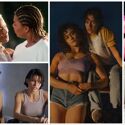
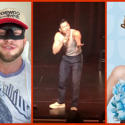
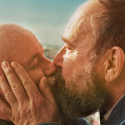

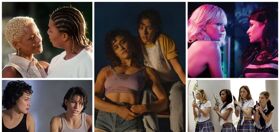
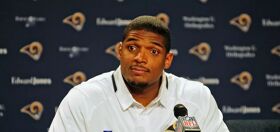

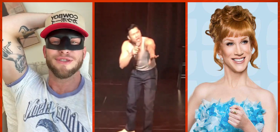

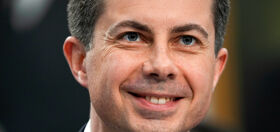
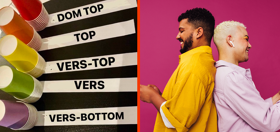

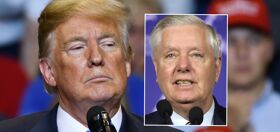
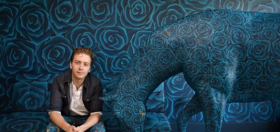


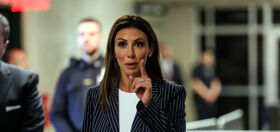
Darth Paul
Even more impressive would be a gay black characters that aren’t complete cliches (be it DL, the gangsta bulldyke, or a showboating drag queen). Someone empowering like the (hot) cop on 6ft Under would be awesome.
blake
As I recall, Underwood’s character on “In Treatment” was not openly gay. He played a fighter pilot who was married and had a son. The character was separated from his wife and was rooming with his best friend and the friend’s boyfriend. During the season, Underwood’s character had an affair with his shrink’s female lover.
Jaroslaw
Noah’s Arc wasn’t all stereotypes. And all the guys were HOT.
bb
I mean I think we’ve long since disproven the theory that the passage of Prop 8 was due to the Af-Am community (for instance, they voted slightly in favor of Prop 8, but not nearly as much as was projected or even initially reported, and they split pretty perfectly along age and religion lines, the way most other — and larger — communities did). But the point is very well taken, and I don’t think it’s just the Af-Am community that loses out when we don’t have these images. Everyone makes assumptions when they have access to these images, and when they don’t. When we don’t have these images, white gay people can begin to see the Af-Am community as distinct, irrelevant, and even something to be feared, and, with only images of the DL, everyone can see black men as a group that engages in duplicitous and dangerous behavior. Not so good. Fortunately, as this post shows, people know better. Unfortunately, we aren’t the ones with the money, but, at least, it’s something we know should matter to us.
Mister C
I’m sorry but since when does Queerty care about Black Gays being on TV especially with some of those past threads during the Democratic campaign? Now like I’ve said before White Gay Men mostly read this blog we blacks are definitely in the minority here and NO I’m not calling you guys prejudice.
Now lets see how many will read this thread, better yet lets see how many will watch the NAACP Awards. We’re not much of their interest and that’s fine also.
And further more The National Black Justice Coalition I haven’t seen much they CONTRIBUTED to the Black Gay Community. I here them al the time going off at predominately white gay male discussion panels about BLACK HOMOPHOBIA as if no other race of people are, and so call chastising Black Gays over certain issues, etc. But never have I seen them do anything else. At least I haven’t seen not to say they have.
No it would be great to see Black Gay characters on TV and we have seen them from the professional, to the flamboyant, to the rugged masculine, to the effeminate, to the hard core thuggish bone type. Then again all it would get is lot of severe criticisms. For what it’s worth we all seen how most on here didn’t care for Noah’s Arc.
Mister C
OOPS in my last paragraph I meant to say Now it would be great to see Black Gay characters on TV
Mister C
Lets try this again. It’s 8AM here in Arizona.
I’m sorry but since when does Queerty care about Black Gays being on TV especially with some of those past threads during the Democratic campaign? Now like I’ve said before White Gay Men mostly read this blog we blacks are definitely in the minority here and NO I’m not calling you guys prejudice.
Now lets see how many will read this thread, better yet lets see how many will watch the NAACP Awards. We’re not much of their interest and that’s fine also.
And further more The National Black Justice Coalition I haven’t seen much they CONTRIBUTED to the Black Gay Community. I hear them all the time going off at predominately white gay male discussion panels about BLACK HOMOPHOBIA as if no other race of people are, and so call chastising Black Gays over certain issues, etc. But never have I seen them do anything else. At least I haven’t seen not to say they have.
Now it would be great to see Black Gay characters on TV and we have seen them from the professional, to the flamboyant, to the rugged masculine, to the effeminate, to the hard core thuggish bone type. Then again all it would get is lot of severe criticisms. For what it’s worth we all seen how most on here didn’t care for Noah’s Arc.
Taylor Siluwé
Mister C:
Are addressing past grievances, or this post in particular? Its difficult to tell.
I also have seen some lack of concern for Black gays at Queerty and other places in the past. But past is just that. When someone reaches out a hand you don’t slap it away because it didn’t come soon enough. No shade, but the word ‘ingrate’ comes to mind.
This post, on its face, is accurate and so on point. It also serves (since you missed it) as a heads up that the Awards are ON TONIGHT, on Fox, and that Black gays characters are up for accolades. Hmm, on Queerty, imagine that.
It seems to me that being disgruntled at this juncture is misguided and completely pointless. But thats just me.
Mister C
Well I’m disgruntled at all and no shade taken. I’m just saying it is what it is. And oh if I was disgruntled you all know that. Life is too short but we as Black Gays do not need to be a muse for when it’s an available attempt to be exposed for someones else’s enjoyment, or foolywang.
Think about it.
MadProfessah
I was there at yesterday’s forum at the Screen Actors Guild in mid-Wilshire, and this is an excellent write-up except it neglects to mention that the forum actually began with an excellent video montage of Black LGBT images in the mainstream media produced and directed by the creative team behind the DL Chronicles and the assembled crowd of 60-80 was welcomed by brand-new SAG Interim Executive Director.
The panel itself was excellent and comprehensive.
Gurlene
I look at any tv or movie with gay characters regardless of race for what it was intended to be (or so I hope). ENTERTAINMENT. You are looking at ACTORS who went to a casting call, read a script and were chosen for their ability to bring the CHARACTER to life. Case closed. Discussion over.
There is no way I will believe that every white gay male lives as the characters on Queer As Folk were depicted. The same applies to Noah’s Arc.
Did anyone else out there notice how for the most part in both of those shows no characters were over 40 and it was next to impossible to see someone who did not have a six-pac and NOT wearing the tighest undies offered by International Male? I mean really.
I loved Noah’s Arc because of the breakthrough it was but having to see week and week this person dressing and talking like he was 16 years old got old fast. But I reminded myself this is a script and actors I am looking at, not reality.
I applaud Rupaul for his bringing the plus size girl who was clearly older than 30 on his latest show. Even though I had a feeling she would be voted off first I am thrilled she showed everyone does not fit the role of a twink or just a strait out slut who has to flaunt her “assetts” just to get and stay noticed.
Tyler Perry hosting the show is the only reason why I am going to watch. I feel confident that at least one actor portraying a gay character will walk away with something. I will leave it at that.
cruiser
Is the reason there are not more positive black gay role models because they are afraid of being a double minority? If there were more programs like Noah”s ARC perhaps it would be easier for people within the black community to be more accepting that one of their own is either gay,lesbian,bi,even transgendered.
It is difficult enough in this world when you are a minority(regardless of whether it is because of race, sexual orientation or whatever)to find role models to look up to. It is time for the major players in the black community to step forward into the spotlight & go “hey, look at me, I’m black, I’m gay & I am successful in what I do(police officer, firefighter, doctor, etc.)I can make a difference.
GranDiva
@Jaroslaw:
The hell it wasn’t…
And the idea that they were all hot is a stereotype in and of itself.
GranDiva
@blake:
“He played a fighter pilot who was married and had a son. The character was separated from his wife and was rooming with his best friend and the friend’s boyfriend. During the season, Underwood’s character had an affair with his shrink’s female lover.”
I’d hardly call it an “affair.” The female patient was not yet the psychiatrist’s lover at that point, although she very much wanted to be, which is why she went after the fighter pilot in the first place. The attempt at the alleged affair was abortive to a degree, and ultimately the whole thing led to the pilot’s suicide over the whole gay thing, and indirectly led to Glynn Turman (a/k/a the former Mr. Aretha Franklin) getting all the acting nomination as the bereaved father rather than Blair Underwood as the suicidal son.
And we must also remember that in the original Israeli show, ???????, the character was played by Lior Ashkenazi, who is just as hot, but nowhere near black.
Jaroslaw
Gran Diva – I watched every single episode of Noah’s Arc and disagree. There were MANY stereotypes, but not all, which is exactly what I said. To expect Hollywood to reflect normal life is only available (sometimes) in movies. Ongoing series are all stereotyped to a degree. No family or relationship would survive if people in real life put each other down the way they do in 99% of sit coms.
Now if I think all the guys are hot (except Trey’s BF) how is that a stereotype? Or is it news to you that to get most roles in a movie or on TV, you have to be good looking?
Paul
I have given up, actually don’t really come here for news on Blk gay issues. Mr. C, I don’t know if you are aware, but a great source for Blk Gay issues online is Rod 2.0. I am not a shill for blog, but as a gay Blk male, I have found that they have an excellent mix of commentary on national news, fashion, and the occasional hottie. Just my 2 cents.
Lucas
I am in agreement with Mister C. Perhaps the issue isn’t mainly about black and gay characters as much it is about black characters. Just look at the amount of stupid television dramas, sitcoms, etc. How many of them currently running feature one, two or more black characters in its cast? I find it hard to even name three. In recent times, most TV shows featuring mainly black characters were canceled and replaced with shows featuring predominantly white characters….
Now, despite of several actors “breaking the barrier” after playing gay role(s), I would say most would still regard playing a gay role on TV is somewhat of a death trap — something to be avoided, and actors do out of desperation. Given that stigma about gay roles, add on to that the lack of black characters in general on TV shows — where is the incentive to play black *AND* gay characters?
Come on people, just think of overreaction to Janet Jackson’s boob incident and the lack of regard for Madonna’s near-pornographic performances you’d hopefully understand difficulty in choosing to play (gay) roles facing black actors in comparison to their white counter parts.
dgz
Lucas, i think you have it right — there’s a dearth of black roles in general. But let me play devil’s advocate for a second: we have to remember, Hollywood is a *business,* first and foremost. from a marketing standpoint they’re looking at catering to a group that is 4-6% of the 12.4% of African Americans in this country. That’s demographically tiny — far smaller than even the Asian American market, and i would challenge anyone to name 10 A-List Asian stars. Worse, after the prop 8 debacle, there’s little to indicate that straight AA audiences are even interested in seeing positive depictions of LGBTs, black or otherwise.
Hollywood loves patting itself on the back for breaking new ground, or influencing people — but with the exception of the odd indie film, tinsel town’s really only interested in success. hopefully, surfacing power-players like Wanda Sykes will be able to convince peers that a market exists, and their ongoing popularity with audiences of all colors and orientations will provide the impetus the community needs.
do you agree, or maybe i missed the point entirely?
cruiser
@dgz: I think you got it spot on!
Mister C
Thanks Paul, I have read Rod 2.0 and it’s great! And in my comment #9 I meant to say thatn I am NOT disgruntled. And Lucas I totally agree with you.
Raphael
PLEASE DON’T FEED THE TROLLS!
Raphael
That comment was in reference to some obviously offensive comments on this thread. I don’t think I need to point them out.
dgz
@QUEEN BEE:
ew. that is the weakest attempt at driving a wedge in our community that i’ve ever seen. you are dismissed.
jbrotherlove
I’ll somewhat echo Taylor Siluwé; I don’t want past complaints to overshadow that this is a great post. Is it the most comprehensive about the event? Perhaps not. But there are other accounts of the event. You should never let one source of information be your only source anyway.
I’m not upset that Queerty doesn’t post more about black, gay issues; a blog responds to its core audience. And they do a good job of that. Besides, there are plenty of black, gay blogs online if that’s what you’re interested in reading. In fact, I find that Queerty does a better job than most mainstream gay blogs at covering non-white gay issues.
The biggest news is how the NAACP has finally started to recognize black, gay characters on a more regular basis. Who would think? This is something the black gay community needs to demand more from mainstream black media as well as gay media.
Lucas
@DGZ, I agree with ya…. You’ve not totally missed my point, but simply added a different perspective to the whole issue. Although you have a point there, that Hollywood, at the end of the day, is trying to sell advertising — and therefore is attempting to cater to the biggest demographics, however, I would argue, that advertisers would still want to reach those minority demographics — 4% of the population is still a big number.
So, if you can reach 4% of 300 million — that’s 12 million people! If 12 million people would give me $1, I’d be a multimillionaire! I won’t pretend that I’m a business major or that I know anything about marketing, but it’s a bit silly for a business to say, well, we’re competing with a gazillion number of other players for 96% of the market, but we’re ignoring 4% of the market that have few, if any players.
Take the Apple success story. Yes, Apple/Mac was (and still is) a niche market, but yet they’ve built successful business model based on their own computing platform, and then expanded their market by creating a successful product that everyone else is trying to copy. And yet, that is not what we’re seeing in Hollywood… There are some successful TV shows in the years past that featured mainly black characters, but instead of copying that success model and creating other TV shows with similar characteristics, they’ve totally abandoned the market…
hairybutt
cause they’re ugly, and we’r racists
Troy Thomas
Mixed race 35 on the DL seeks emails to contact. Be near La. Californication.
Love,
Troy
ran